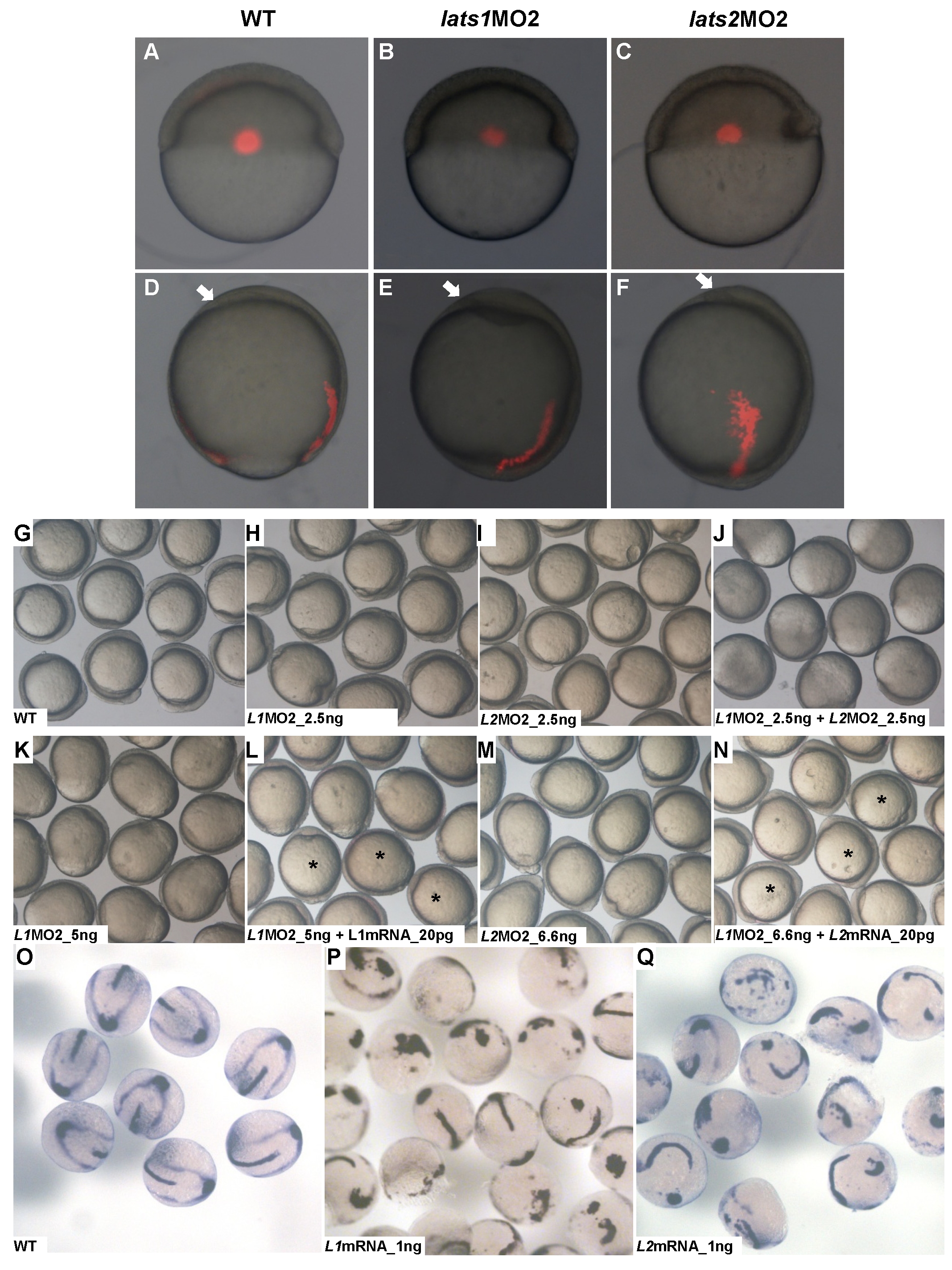Fig. S1 lats1MO2 and lats2MO2 used in the present study have synergistic effect, and the morphants could be partially rescued by low-dose overexpression of the corresponding lats gene. A-F: Migration of the lateral cell groups during gastrulation labeled by photoactivation of Kaede in the lateral blastopore of wild-type (A,D), the lats1 morphant (B,E) and lats2 morphant (C,F) embryos. A-C show the labeled cell groups at the onset of gastrulation, while D-F show the labeled arrays at bud stage (10 hours postfertilization [hpf] in D, and 10.5 hpf in E and F). The doses of kaede mRNA, lats1MO2, and lats2 MO2 are 500 pg, 3.3 ng, and 5 ng per embryo, respectively. H,I: The threshold concentrations of lats1MO2 and lats2MO2 were determined as 2.5 ng/embryo respectively. J,K,M: Relative to the single lats1MO2 morphants (K, 5 ng/embryo) or lats2MO2 (M, 6.6 ng/embryo) morphants, co-injection of lats1MO2 (2.5 ng/embryo) and lats2MO2 (2.5 ng/embryo) showed much severer phenotypes (J), even though the total injection dose (5ng/embryo) was not higher than the dose of either lats1MO2 (K) or lats2MO2 (M). The result indicated that lats1MO2 and lats2MO2 had synergistic effect, supporting the effectiveness and specificity of MOs. G: Compared with wild-type embryos (G), the living lats1 morphants (K) appeared deficient in epiboly and extension movement (n = 27). L: When co-injected with lats1 mRNA, around 46.7% (14 of 30 injected embryos) of the lats1 morphants were rescued (stars indicated wild-type like embryos). M: A total of 75% (24 out of 32) of the lats2 morphants were somewhat elongated along the AP (anterior-posterior) axis, which indicated defect in gastrula movement. N: Co-injection of lats2 mRNA showed partial rescue, as 43.9% of the injected embryos (15 out of 35) were wild-type like with roundish shape (stars indicated wild-type like embryos). The partial rescue of lats1/lats2 morphants by their corresponding mRNA further revealed the specificity of MOs. O-Q: dlx3/ntl/hgg1 labeling of wild-type embryos (O), and the embryos overexpressing lats1 (P), and lats2 (Q). Of interest, the lats1 and lats2 highly overexpressed embryos also showed defects in gastrulation movements at percentages of 73.58% (78 of 106, lats1 mRNA) and 50% (12 of 24, lats2 mRNA), respectively. Therefore, to get a full rescue of lats1/lats2 morphants by injecting their corresponding mRNA is somehow difficult. The concentrations injected were shown in each corresponding panel. L1MO1, lats1 MO1; L1MO2, lats1 MO2; L2MO1, lats2 MO1; L2MO2, lats2 MO2; L1mRNA, lats1 mRNA; L2mRNA, lats2 mRNA.
Image
Figure Caption
Figure Data
Acknowledgments
This image is the copyrighted work of the attributed author or publisher, and
ZFIN has permission only to display this image to its users.
Additional permissions should be obtained from the applicable author or publisher of the image.
Full text @ Dev. Dyn.

